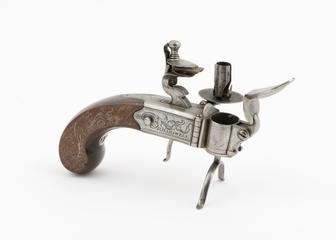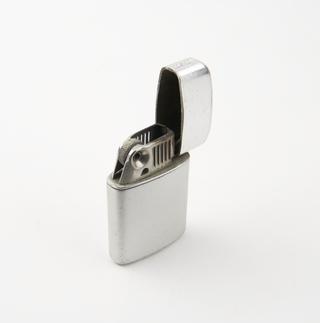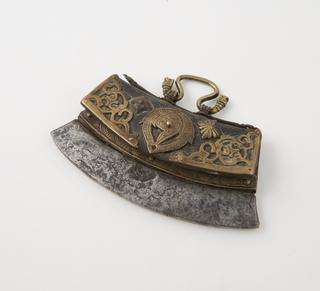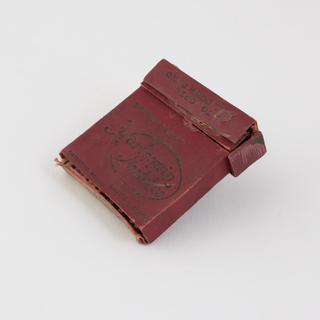
Photograph of two Maori people using a fire-plough, Aotearoa, New Zealand

Photograph of two Maori people making fire with a fire-plough, the woman holding the hearth, the man using the plough, Aotearoa (New Zealand)
Humans have throughout history used different techniques and tools to create life-sustaining fires. One of the oldest methods is based on friction. Solid combustible materials are slowly ground against each other or a hard surface, until their temperature is increased, and an ember is produced. Tinder, which is a fine material with the ability to combust quickly, is placed where the two tools touch and ignited by the ember.
Friction methods are presumed to have originated around the same time as percussion methods. While the principle is roughly the same across the world, the techniques and tools vary and range from drilling to ploughing and sawing. Fire-ploughs, like the one pictured in this photograph, usually consist of a slender twig and a long piece of wood with a groove. The twig is rubbed through the groove in a ploughing motion, which produces hot dust that functions as coal.
This photograph is part of the Bryant and May fire-making collection, which used to be displayed in a private museum within the Bryant and May match-making factory’s offices. The collection comprises around 1200 objects, dating from the Stone Age to the early 20th century that illustrate the variety of tools and techniques humans across the world have used to create fires.
The collection was mostly acquired by the ornithologist and fire-making enthusiast Edward Bidwell and cared for by the collector Miller Christy. Bidwell collected between the late 19th and early 20th century – when Britain's colonial power was at its peak. Tracing the objects’ provenance is therefore difficult and part of the long and problematic history of colonial exploitation.
Details
- Category:
- Firemaking
- Object Number:
- 1937-682/120
- Materials:
- paper (fibre product)
- type:
- photographs
- credit:
- Wilkinson Sword Ltd.




